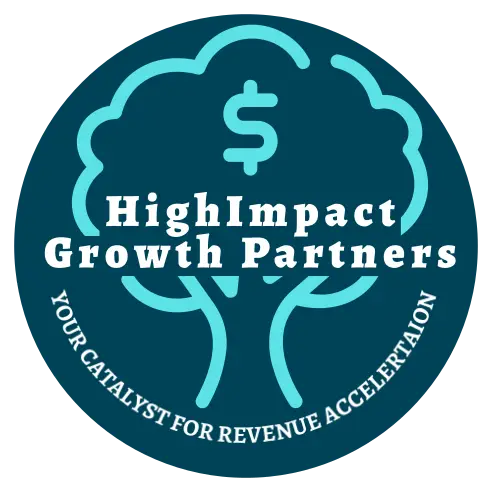What is Toxic Positivity and Why It’s Important to Recognize it?
In a Nutshell
- Definition of Toxic Positivity: Toxic positivity is the pressure to maintain an overly positive mindset, often leading to the suppression of genuine emotions like sadness and frustration.
- Signs of Toxic Positivity: Common signs include dismissive comments like “just think happy thoughts” and forced optimism, which can invalidate struggles and create pressure to hide true feelings.
- Impact on Mental Health: Toxic positivity can harm mental health and relationships by fostering isolation and misunderstanding, as individuals may feel compelled to hide their authentic emotions.
- Cultivating Authentic Positivity: Embrace vulnerability and acknowledge struggles as part of a healthy mindset. Practices like journaling, gratitude, and self-reflection can help balance emotions.
- Responding to Toxic Positivity: Foster self-awareness and compassionate communication. Validate feelings and set boundaries to create a supportive environment where all emotions are welcome.
Toxic positivity is the phenomenon where individuals feel pressured to maintain an overly positive mindset, often at the expense of acknowledging genuine emotions. This unhealthy positivity can lead to emotional suppression, where feelings of sadness, frustration, or anxiety are dismissed or invalidated in favor of a relentless pursuit of happiness. It’s crucial to recognize that while positive thinking can be beneficial, it becomes toxic when it disregards our authentic experiences and struggles.
Understanding the difference between healthy positive thinking and toxic positivity is essential for fostering emotional well-being. Embracing our full range of emotions allows us to process challenges more effectively and connect with ourselves and others on a deeper level. By acknowledging toxic positivity for what it is, we can create a more compassionate space for ourselves and those around us—one where all emotions are valid and worthy of expression. Remember, it’s perfectly okay not to be okay sometimes; recognizing this truth is the first step towards genuine healing and growth.
The Signs of Toxic Positivity in Everyday Life
In our quest for happiness and positivity, it’s crucial to recognize the signs of toxic positivity that can creep into our everyday lives. While maintaining a positive outlook is important, we must be mindful of how we express that positivity. For instance, when someone shares their struggles and the response is a dismissive “just think happy thoughts,” it can feel invalidating. This is an example of toxic positivity that minimizes struggles instead of acknowledging them.
Another common manifestation is forced optimism—when we insist on seeing the silver lining in every situation, even when it’s inappropriate or unrealistic. This behavior not only undermines genuine feelings but also creates an environment where people feel pressured to hide their true emotions.
Recognizing these toxic behavior patterns allows us to foster more authentic connections with ourselves and others. Instead of glossing over challenges with empty platitudes, let’s embrace vulnerability and support each other in navigating life’s ups and downs together. By doing so, we create space for real conversations that honor our experiences while still allowing room for hope and healing.
The Impact of Toxic Positivity on Mental Health and Relationships
Toxic positivity, while often rooted in the desire to uplift and encourage, can have profound mental health effects that ripple through our relationships. It’s important to recognize that genuine emotional well-being encompasses a full spectrum of feelings, including sadness, anger, and vulnerability. When we dismiss these authentic emotions in favor of a relentless pursuit of positivity, we inadvertently create an environment where individuals feel compelled to hide their true selves.
Relationships suffering from toxicity often struggle under the weight of unspoken feelings. Friends and loved ones may feel isolated from support systems that should provide comfort during tough times. Rather than fostering connection, toxic positivity can lead to misunderstandings and distance as people fear expressing their struggles for fear of being met with dismissal or platitudes.
Embracing our emotions—both the light and dark—can cultivate deeper connections and understanding among us. By allowing ourselves to be vulnerable and acknowledging the challenges we face, we open the door to more authentic relationships built on empathy and support. Let’s strive for a balance where we can share joy without overshadowing pain—a place where every feeling is valid and welcomed in our journey toward mental wellness.
How to Cultivate Authentic Positivity Without Falling into the Trap of Toxicity
Cultivating authentic positivity is a beautiful journey that encourages us to embrace our true selves while navigating the complexities of life. It starts with understanding that positivity doesn’t mean ignoring our struggles; rather, it involves acknowledging them and finding healthy coping mechanisms to rise above.
One powerful practice is embracing vulnerability. When we allow ourselves to be open about our feelings and experiences, we create a genuine connection with others. This connection fosters support and understanding, helping us balance our emotions with an uplifting outlook on life.
Incorporating authentic positivity practices into your daily routine can transform your mindset. Start by setting aside time for reflection—whether through journaling or meditation—to explore your thoughts and feelings deeply. Celebrate small victories, practice gratitude regularly, and surround yourself with people who inspire you to grow.
Remember, it’s perfectly okay to feel a mix of emotions; balancing them is key to maintaining authenticity in your positivity. By cultivating this mindful approach, you can shine brightly without falling into the trap of toxicity—creating a ripple effect of genuine joy in both your life and the lives of those around you.
Strategies for Responding to Toxic Positivity in Yourself and Others
Navigating the delicate waters of toxic positivity requires a blend of self-awareness and compassion. The first step in this journey is embracing self-awareness techniques that allow you to recognize when you or someone else is dismissing genuine feelings. Take a moment to pause and reflect on your emotions; journaling can be an effective tool for processing thoughts and identifying patterns in your reactions.
When faced with toxic positivity from others, employing effective communication strategies can transform the conversation. Instead of brushing aside negative feelings, practice validating emotions by saying things like, “It’s okay to feel this way,” which opens up space for authentic dialogue. Compassion in conversations is key—approach discussions with empathy and understanding, remembering that everyone has their struggles.
Setting boundaries with toxic behavior is equally important. It’s perfectly acceptable to express your discomfort when someone minimizes your experiences or those of others. By establishing clear limits on what types of interactions you will engage in, you empower yourself and encourage healthier dynamics.
Ultimately, responding to toxic positivity involves fostering an environment where all emotions are welcome. By nurturing self-awareness and practicing compassionate communication, we can create spaces where vulnerability thrives, leading us toward deeper connections and personal growth.
Conclusion: Embrace Real Emotions and Foster Genuine Connections Beyond Toxic Positivity
In conclusion, embracing real emotions and fostering genuine connections is essential for our personal growth and well-being. Toxic positivity may seem like a comforting shield against the challenges of life, but it often stifles our true feelings and hinders authentic relationships. Instead of masking our struggles with forced optimism, let’s celebrate vulnerability as a strength. By allowing ourselves to experience the full spectrum of emotions—joy, sadness, anger, and everything in between—we open the door to deeper connections with others.
When we share our authentic selves, we invite others to do the same. This mutual openness creates a supportive environment where everyone can thrive. So let’s break free from the confines of toxic positivity and embrace honesty in our interactions. Each moment of authenticity not only enriches our lives but also fosters compassion and understanding among us all. Together, we can cultivate a world where real emotions are honored, paving the way for meaningful relationships that uplift and inspire us on this beautiful journey called life.




